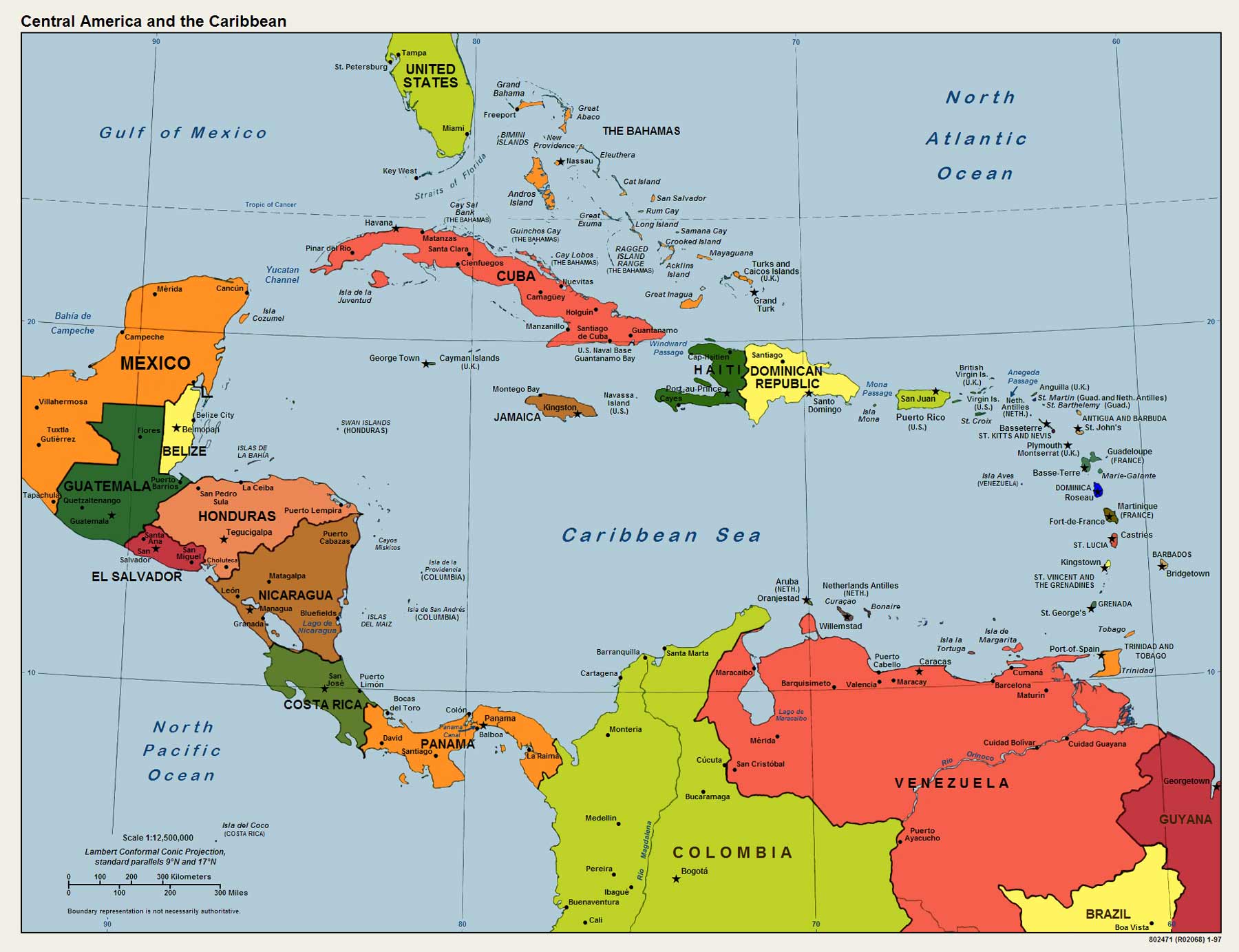America Caribbean Political Map
The Caribbean region refers to the islands in the Caribbean Sea as well as the neighboring coastal regions of Central America, Mexico, and South America. Politically, the Caribbean region is highly diverse, with territories belonging to numerous different countries.
Cuba is the largest island in the Caribbean and a communist country. Cuba has been governed by the Communist Party since the 1959 revolution led by Fidel Castro. The capital and largest city is Havana.
The Dominican Republic shares the island of Hispaniola with Haiti. The Dominican Republic is a presidential republic with its capital and largest city as Santo Domingo.
Jamaica is an independent country and constitutional monarchy. Jamaica's capital and largest city is Kingston. The island nation has rich cultural history and birthplace of Rastafarianism.
The Bahamas is an archipelago and independent commonwealth country. The capital is Nassau on New Providence island. Tourism is a major part of the economy.
Puerto Rico is a Caribbean island and unincorporated U.S. territory. As a U.S. territory, Puerto Ricans are citizens of United States. The capital and largest city is San Juan.
The U.S. Virgin Islands are also a U.S. territory located east of Puerto Rico. The main islands are Saint Croix, Saint John and Saint Thomas.
Haiti occupies the western portion of Hispaniola. Haiti is the poorest country in the Americas. The capital and largest city is Port-au-Prince.
This covers some of the major independent nations and territories found in the Caribbean region of North America. The diverse political landscapes contribute to a rich blend of cultures.
